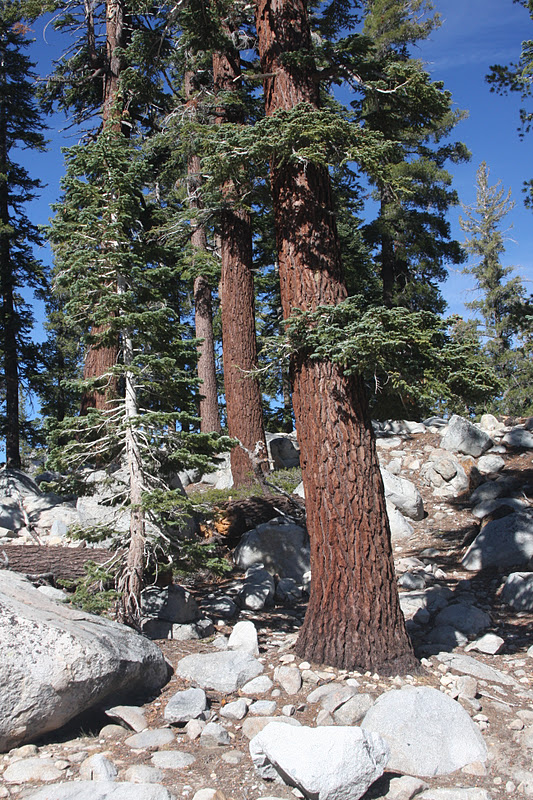- Home
- >
- Conifer Seeds A-O by Latin Name
- >
- Red Fir, Silvertip Fir (abies magnifica)
Red Fir, Silvertip Fir (abies magnifica)
SKU:
£1.10
1.1
25
£1.10 - £25.00
Unavailable
per item
Seed Prices
1 gram (approx 10 seeds) £1.10
2 grams (approx 20 seeds) £1.75
5 grams (approx 50 seeds) £3.75
10 grams (approx 100 seeds) £6.75
25 grams (approx 250 seeds) £15.00
50 grams (approx 500 seeds) £25.00
Use the drop down button below to select the seed quantity
Germination, Sowing and After Care Information for
Red Fir (abies magnifica)
Seeds of the true fir species are relatively easy to germinate and grow. The dormancy within the seed is short and easily broken. This is achieved by a short period of cold stratification in the fridge.
You can do this by first soaking the seeds in water for 24 hours. Fully drain away all of the water and place the seeds in a zip-lock freezer bag. Place the seeds in the fridge, it is important that during this period that the seeds do not dry out or are waterlogged otherwise the pre-treatment will be ineffective. After between 6 and 8 weeks under these conditions the seeds are ready to be sown. In general, the seeds will fail to germinate unless treated in this way, simply sowing untreated seeds in compost at room temperature will not break down the dormancy and germination will be disappointing.
Fill your chosen container with a good quality general potting compost. Suitable containers could be plant pots, seed trays or plug trays or even improvised containers with drainage holes. Firm the compost gently and sow the seeds on the surface. If you are sowing in plug trays, sow 2 or 3 seeds per cell. Cover the seeds with a couple of millimetres of vermiculite or failing that a fine layer of sieved compost. Follow with a gentle watering and keep them at room temperature.
Germination will begin a few weeks from sowing. The seedlings are reasonably robust and trouble free and usually grow to a height of between 2 and 5 cm in the first growing season depending on the sowing date and cultural techniques. Densely sown seedlings are at risk from fungal diseases such as “damping off” which can cause rapid loss of many seedlings.
Developing seedlings should be fine in full sun, keep them well watered and free of competing weeds. Growth will accelerate in the second and subsequent years and the developing young trees should be re-potted as necessary preferably during the dormant season. After perhaps 3 years they are ready to be planted in their permanent position
You can do this by first soaking the seeds in water for 24 hours. Fully drain away all of the water and place the seeds in a zip-lock freezer bag. Place the seeds in the fridge, it is important that during this period that the seeds do not dry out or are waterlogged otherwise the pre-treatment will be ineffective. After between 6 and 8 weeks under these conditions the seeds are ready to be sown. In general, the seeds will fail to germinate unless treated in this way, simply sowing untreated seeds in compost at room temperature will not break down the dormancy and germination will be disappointing.
Fill your chosen container with a good quality general potting compost. Suitable containers could be plant pots, seed trays or plug trays or even improvised containers with drainage holes. Firm the compost gently and sow the seeds on the surface. If you are sowing in plug trays, sow 2 or 3 seeds per cell. Cover the seeds with a couple of millimetres of vermiculite or failing that a fine layer of sieved compost. Follow with a gentle watering and keep them at room temperature.
Germination will begin a few weeks from sowing. The seedlings are reasonably robust and trouble free and usually grow to a height of between 2 and 5 cm in the first growing season depending on the sowing date and cultural techniques. Densely sown seedlings are at risk from fungal diseases such as “damping off” which can cause rapid loss of many seedlings.
Developing seedlings should be fine in full sun, keep them well watered and free of competing weeds. Growth will accelerate in the second and subsequent years and the developing young trees should be re-potted as necessary preferably during the dormant season. After perhaps 3 years they are ready to be planted in their permanent position



